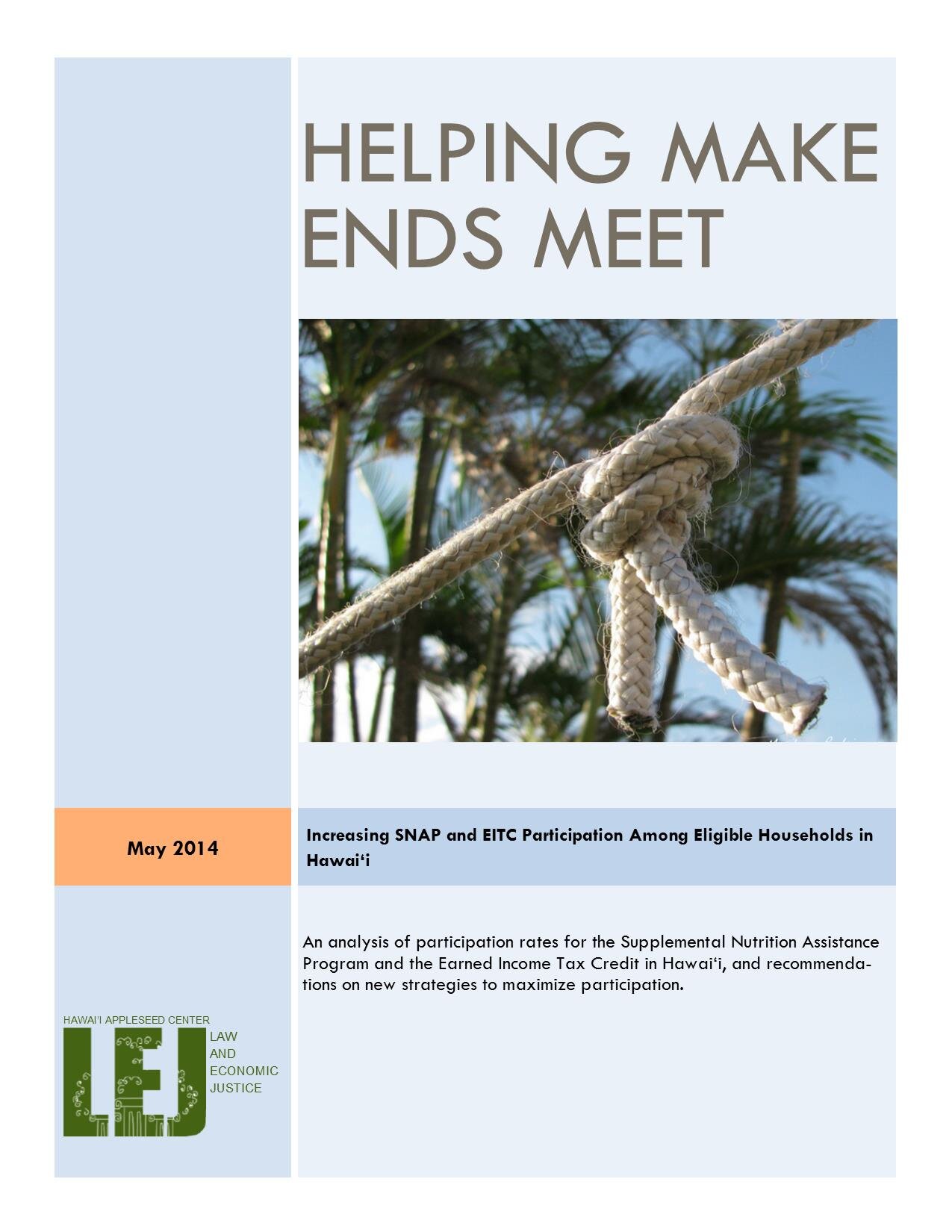Helping Make Ends Meet
SNAP and the EITC in Hawaiʻi
Executive Summary
Every day, low-income households in Hawaiʻi struggle to pay their rent, put food on the table, cover their bills, and simply make ends meet. Our state has the highest cost of living in the nation, at nearly 160 percent of the national average, and paying for basic necessities is a daunting challenge for low-income families.
Housing expenses are nearly twice the national average, and 73 percent of extremely low-income households spend more than half of their income on shelter. Groceries, utilities and transportation costs are also the highest in the country.
Hawaiʻi’s relatively low wages mean that our workers are not compensated nearly enough to mitigate the astronomical cost of living. Exacerbating these struggles is the state’s regressive tax system, with people in poverty paying a greater share of their income in taxes than those in all but three other states.
The staggeringly high cost of living makes Hawaiʻi the eighth poorest state in the country under the U.S. Census Bureau’s Supplemental Poverty Measure, which considers both the cost of living and available government assistance. Almost one in five children live below the official poverty guidelines and, unsurprisingly, 15 percent of our households—including 20 percent of those with children—struggle to put food on the table.
When families don’t have enough income to cover these basic expenses, they must make difficult tradeoffs between paying for rent, food, medical care, and other necessities, resulting in longterm detrimental effects to health and overall wellbeing.
In the face of these structural economic hardships, there are important avenues to help low-income families get by in Hawaiʻi. Two of the most effective antipoverty programs are entirely funded by the federal government: the Supplemental Nutrition Assistance Program (SNAP) and the Earned Income Tax Credit (EITC).
Both SNAP and the EITC provide critical support to a wide range of households, including workers, families, people with disabilities, immigrants and seniors. Yet thousands of struggling households who are entitled to this assistance are not taking advantage of it. With the lingering impact of the recession, these programs are needed more than ever. This underutilization also means that our state is missing an opportunity to stimulate our local economies as recipients spend their SNAP and EITC dollars.
This report provides an overview of SNAP and the EITC, examines their utilization and impact in Hawaiʻi, describes current outreach efforts, and makes recommendations on how to boost participation, both by increasing resources for outreach and by adopting successful strategies from around the country.

